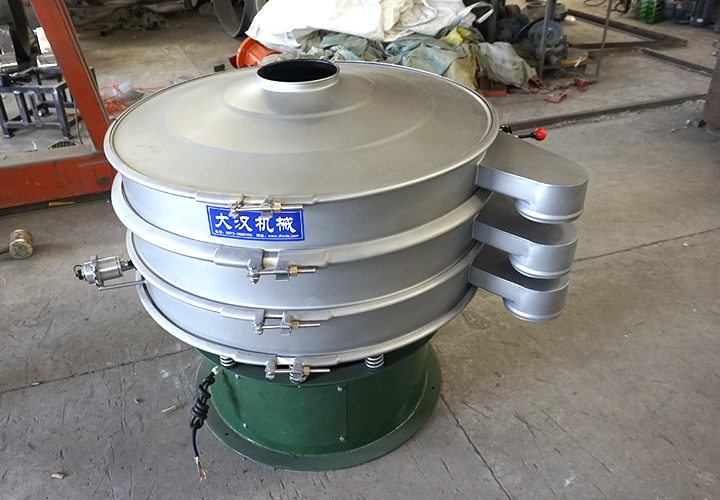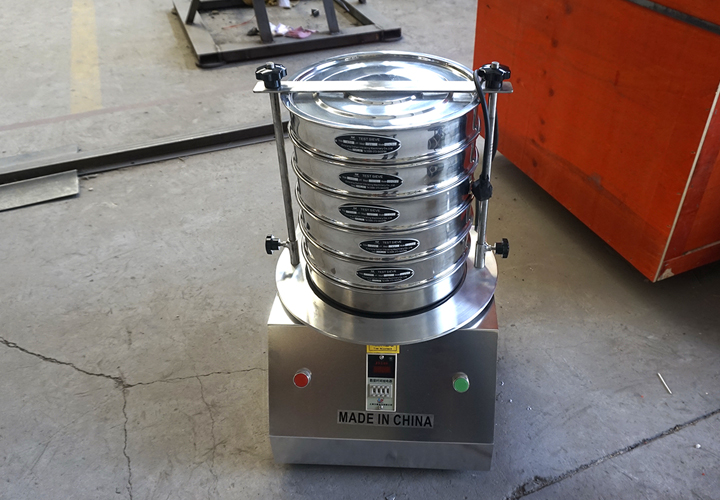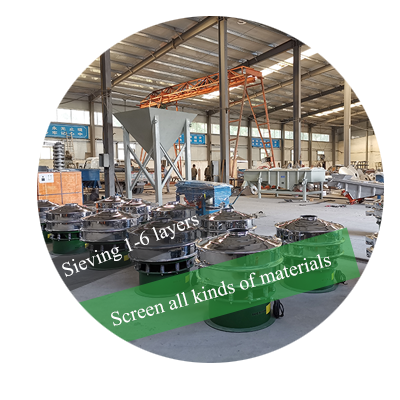Vibro Sifter Magnesium Oxide
What is Vibro Sifter Magnesium Oxide?
Vibro Sifter Magnesium Oxide is a machine used to process magnesium oxide, rapidly screening, grading, and removing impurities from powder or granular materials. It typically uses an adjustable screen size of 20-500 mesh. The output depends on the screen type, ranging from 0.5-2 tons/hour for small units to over 10 tons/hour for large units.
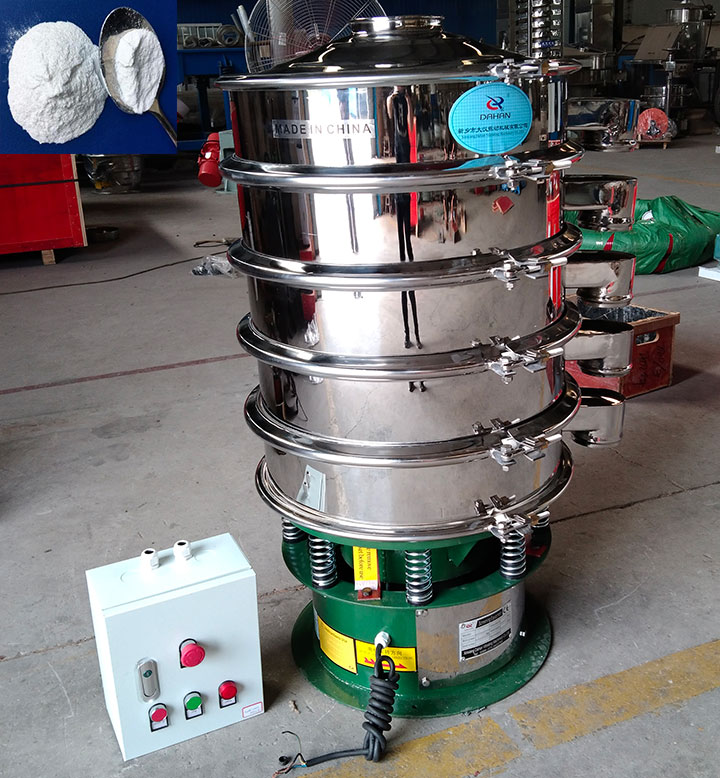
This equipment utilizes advanced vibration principles to achieve high-precision and effective grading of magnesium oxide, significantly improving screening accuracy and efficiency while also meeting high-volume production requirements. To address magnesium oxide's tendency to absorb moisture and clog the mesh, an ultrasonic screen cleaning system can be added to effectively address this problem. Whether it's a circular vibrating screen for initial screening or a linear screen specifically designed for granular materials, both devices effectively perform grading and separation tasks in the magnesium oxide production process. They are suitable for industrial and chemical applications.
What are the properties of Magnesium Oxide?
Magnesium oxide can be divided into light and heavy magnesium oxide. Light magnesium oxide is a loose powder with a generally finer particle size, making it prone to agglomeration and screen clogging during screening. Heavy magnesium oxide is a dense granular material with a relatively larger particle size.

When screening light magnesium oxide with the Vibro Sifter Magnesium Oxide, an anti-static screen, such as a woven wire mesh coated with Teflon, can be used. A screw feeder can be used for uniform feeding. Three screen cleaning systems are available:
Bouncing ball cleaning system: Food-grade silicone or polyurethane bouncing balls are placed between the screen and the bottom mesh. These balls continuously impact the screen, effectively breaking up soft agglomerates and preventing particles from clogging the mesh.
Ultrasonic screen cleaning system: This is the optimal solution for very fine powders. High-frequency ultrasonic vibrations effectively prevent fine powder from adsorbing and clogging the screen, significantly improving screening efficiency and accuracy.
Rotating brush cleaning system: A slowly rotating brush brushes against the bottom of the screen, cleaning the screen. This system is suitable for certain specific conditions.
The main challenges with heavy magnesium oxide are high abrasion, high specific gravity, and potential impact on the screen. Heavy-duty wire mesh or perforated plate are preferred. For extremely high-abrasion conditions, polyurethane mesh can be used, offering several times the wear resistance of steel mesh. Heavy magnesium oxide, with its regular particles and excellent fluidity, is inherently less likely to clog the screen. Vibro Sifter Magnesium Oxide can be made of either carbon steel or standard stainless steel, meeting typical requirements of the refractory industry. However, stainless steel is still necessary to prevent rust in humid environments.
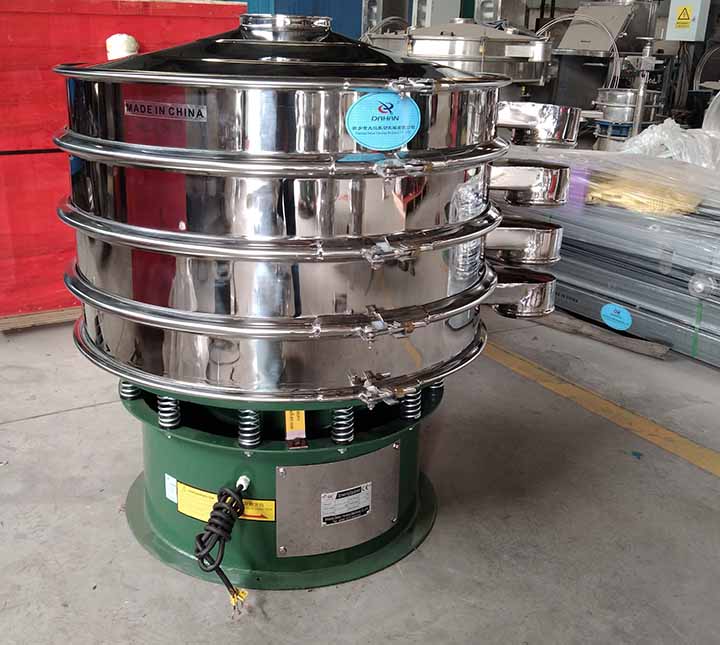
Vibro Sifter Magnesium Oxide Video Demonstration
Working Principle of the Vibro Sifter Magnesium Oxide
The Vibro Sifter Magnesium Oxide operates by using a motor-driven vibrator to generate high-frequency vibrations, causing the magnesium oxide powder to move in three dimensions (horizontally, vertically, and diagonally) on the screen. The process is as follows: The magnesium oxide powder first passes through the feed inlet and is evenly distributed on the screen surface. The vibration causes fine particles to pass through the screen, separating them while coarse particles continue to move forward. After classification, magnesium oxide of different particle sizes (such as ultrafine powder, standard powder, and coarse particles) is discharged from corresponding discharge ports. Some models are equipped with bouncing balls or ultrasonic screen cleaning devices to effectively prevent screen clogging and ensure continuous and stable screening.
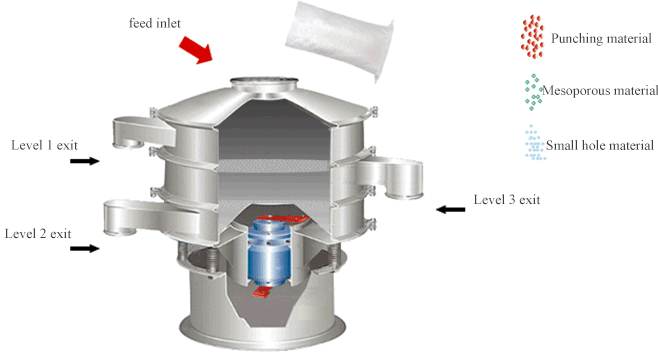
How many types of Vibro Sifter Magnesium Oxide equipment are there?
The equipment used for the Vibro Sifter Magnesium Oxide is typically made of 304/316 stainless steel to avoid contamination of the high-purity magnesium oxide. Common equipment types include horizontal cyclone screens, ultrasonic vibrating screens, linear vibrating screens, and rotary vibrating screens.
Ultrasonic vibrating screens: They address the agglomeration and clogging issues of ultrafine powders above 500 mesh. For lightweight magnesium oxide with finer, more agglomerated particles, ultrasonic vibrating screens use high-frequency vibrations generated by an ultrasonic generator to keep the material loose, allowing it to pass smoothly through the screen, ensuring screening accuracy and yield.
Linear vibrating screens: Suitable for screening large-scale particles between 20-200 mesh and are used for industrial-grade magnesium oxide. If the particle size of heavy magnesium oxide falls within this range and the production process requires high output, a linear vibrating screen is an appropriate choice. Its linear reciprocating motion propels the material across the screen surface rapidly, enabling large-scale screening.
Rotary vibrating screens: When fine screening of heavy magnesium oxide is required and the particle size is between 100 and 500 mesh, a rotary vibrating screen can also be used. While its output is lower than that of a linear vibrating screen, its screening accuracy is higher.
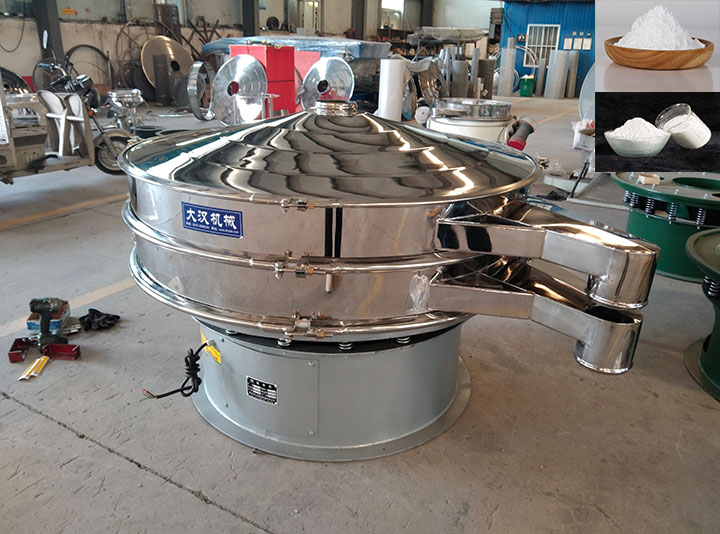
Horizontal cyclone screens: By combining airflow rotation with screen vibration, centrifugal force disperses magnesium oxide particles, achieving efficient separation, with fine powder quickly passing through the sieve (the mesh size is adjustable, typically 80-400 mesh) while coarse particles are discharged along the walls. Its enclosed design significantly reduces dust spillage from lightweight magnesium oxide. This equipment boasts a screening efficiency exceeding 95%, increasing throughput by 30% compared to traditional vibrating screens. Its anti-clogging properties make it particularly suitable for processing lightweight, dust-prone magnesium oxide.
The applicable functions of the above four types of equipment can be summarized as follows: linear screens and rotary vibrating screens are usually used to remove oversized particles or impurities when removing impurities from magnesium oxide; rotary vibrating screens and horizontal cyclone screens can be used for multi-level particle size classification of magnesium oxide when grading; ultrasonic vibrating screens are most suitable when particle size control is required, especially for fine powders or when uniform particle size distribution is required, such as pharmaceutical-grade and fine chemical-grade magnesium oxide.
Vibro Sifter Magnesium Oxide Applications
Magnesium oxide sieved through the Vibro Sifter Magnesium Oxide can meet the high-purity, refined needs of pharmaceutical formulations, rubber reinforcing fillers, refractory high-temperature stabilizers, agricultural soil conditioners, and electronic insulation and thermal conductivity applications.
In the pharmaceutical industry, high-purity fine powders ≥325 mesh are used in antacids and pharmaceutical excipients to ensure formulation uniformity and bioavailability. In the plastics industry, Vibro Sifter Magnesium Oxide grading results in uniform particles, enhancing mechanical properties, heat resistance, and aging resistance. In refractory materials, coarse-grained magnesium oxide with a size of 20-100 mesh exhibits excellent high-temperature stability and is suitable for high-temperature applications such as magnesium bricks and metallurgical furnace linings. In agriculture, magnesium oxide with a specific particle size of 100-325 mesh can regulate soil pH, promote crop nutrient absorption, and reduce dust pollution. In electronic materials, ultrafine magnesium oxide powder is used in high-thermal conductivity fillers and precision ceramic substrates to improve the heat dissipation performance of electronic equipment.

As a key step in magnesium oxide powder processing, the importance of the Vibro Sifter Magnesium Oxide continues to grow as its application areas expand. Through efficient particle size classification technology, it significantly improves product uniformity and purity, enabling customized production for diverse industries such as pharmaceuticals, industrial applications, and refractory materials. In terms of equipment selection, mainstream models such as rotary vibrating screens and ultrasonic screens each have their own advantages. Pharmaceutical-grade magnesium oxide production prefers fully enclosed machines with anti-contamination designs to ensure hygienic standards, while industrial applications prioritize high output and durability. A suitable vibrating screen can effectively optimize screening efficiency, thereby comprehensively improving the quality and application value of magnesium oxide products.
-
Battery Anode Materials Vibrating Sieve
The separation accuracy is allowed to be as low as 20µm (#635 mesh), the sieving accuracy can be increased by 1-70% ...
-
The separation accuracy is allowed to be as low as 20µm (#635 mesh), the sieving accuracy can be increased by 1-70% ...
-
Remove small stones, sand or clay particles, leaves, dust and other ...
-
Standard test sieve is a screening tool used for particle size analysis of materials.
-
Vibratory Sifter Medicine Powder Sieving
Vibratory Sifter Medicine Powder Sieving is a device used in the pharmaceutical industry for fine sieving of pharmaceutical powders...
-
Standard test sieve price
Standard test sieve price usually ranges from US$20 to US$300, depending on the size, material and accuracy level...
-
Vibro Sifter Flour
The Vibro Sifter Flour uses a motor-driven eccentric weight to generate three-dimensional vibration...
-
Vibro Sifter Baking Soda
Vibro Sifter Baking Soda is a process or equipment that uses a vibrating screen to sieve, grade, or filter baking soda...

Email:
sale@xxdahan.com
WhatsApp:
+86 15236742901
Add:
1000m West of Forest Park,Yanjin County,Xinxiang City,Henan Procince,China.

